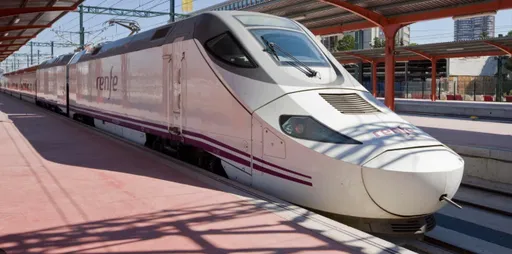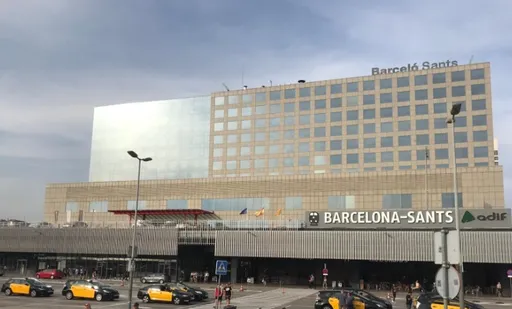In 2003, I vividly remember traveling overnight for 8 to 9 hours from Barcelona to Madrid. At that time, the concept of high-speed trains didn’t exist yet. Now, 22 years later, as I prepare for another trip to Spain and ponder the means of transportation from Barcelona to Madrid, the thought of taking an overnight train already filled me with fatigue. However, I discovered through research that Spain has introduced a high-speed train called AVE and found hope that I could make reservations through the Renfe official application.

Renfe Reservations, A Mysterious VPN Access
The problem was that the booking process on Renfe was not smooth at all. Surprisingly, I couldn’t access the Renfe official website or application (whether iOS or Android) from a Korean IP address, nor could I sign up for a membership or purchase tickets. No matter how many times I tried at different times of the day, it was the same. Just as I was about to give up and book a domestic flight, using a VPN to connect with a German IP address made everything miraculously work smoothly.
After that, I discovered that I could not access it with IPs from China, Japan, Korea, or Spain, but could only connect with IPs from other European countries. This seems to indicate a deliberate policy from Renfe aimed at restricting access from certain regions. Nevertheless, thanks to this, I was able to successfully make an AVE ticket reservation before my trip, and I experienced the AVE firsthand on the round trip between Barcelona and Madrid.
AVE, Comfort that Breaks Prejudices and Outstanding Cost-Effectiveness
The distance from Barcelona to Madrid is about 620 km. This is much farther than the distance from Seoul to Busan (about 420 km) and similar to the distance of the Tokyo-Kobe Shinkansen Nozomi line (about 590 km).
When booking the AVE, I found many suggestions online advising to use the 'Silent Coach' as Spanish people tend to be noisy. Out of curiosity, I used the Silent Coach on the way there and a regular cabin on the return trip, and both cabins were very quiet. The idea that Spanish people are noisy seems to be merely a prejudice. The Silent Coach boasted a level of quiet comparable to Shinkansen or KTX, and the regular cabin was similarly quiet. In fact, aside from a few Chinese tourists talking loudly in Mandarin, all Spanish passengers were quiet.
The most surprising aspect was the price. It was 54 euros for a one-way ticket, plus 5 euros for a seat reservation, totaling 59 euros. Considering the distance, this is even cheaper than Korea’s KTX. Moreover, the speed was overwhelming. The AVE covered the 620 km from Barcelona to Madrid in just 2 hours and 30 minutes without any stops. On the return trip from Madrid to Barcelona, it took about 3 hours and 10 minutes with 3 stops.

When considering that the KTX takes nearly 3 hours to travel the 420 km from Seoul to Busan due to multiple stops and not reaching its speed properly, the AVE truly lives up to its name as a 'high-speed train'. Its cleanliness, Wi-Fi, and power outlets per seat are on par with KTX, but I am certain that it is a vastly superior system compared to KTX due to its much faster speed and lower cost. Both times I used it, there were minor delays of about 10 to 15 minutes, but such discrepancies are also common with KTX, so it wasn't a significant issue.
Comparison with Shinkansen: Unmatched Precision
Of course, comparing it with Japan's Shinkansen tells a different story. The fare for the Shinkansen between Tokyo and Kobe is about 15,000 yen (over 100 dollars), which is more than twice that of AVE or KTX. However, the Shinkansen boasts extraordinary precision and speed, adhering to departure and arrival timings almost to the second. This is a result of the Japanese's near-obsession with punctuality. The Shinkansen, which has such frightening accuracy, is literally in a separate league, a 'service that transcends grades' compared to AVE or KTX.
Dismissal of Safety Concerns and Concluding Thoughts
Before the trip, I heard that luggage stored in the AVE baggage compartment could be stolen during stops, but from my personal experience, that was completely untrue. Nobody showed any interest in others' bags, and I felt very safe with good security. Especially on the trip from Madrid to Barcelona, there were no issues at the 3 stops.
In conclusion, Spain's AVE offers a fast, comfortable, and economically efficient railway system. Seeing that I can now travel comfortably and quickly between major cities, as opposed to traveling overnight on a train 22 years ago, I felt a distinct generation gap during this trip.

I hope this account of using the AVE provides useful information for those planning a trip to Spain. In the next post, I will discuss another aspect of my Spanish journey. Do you have any experiences using Spanish train stations or any other questions?

There are no comments.